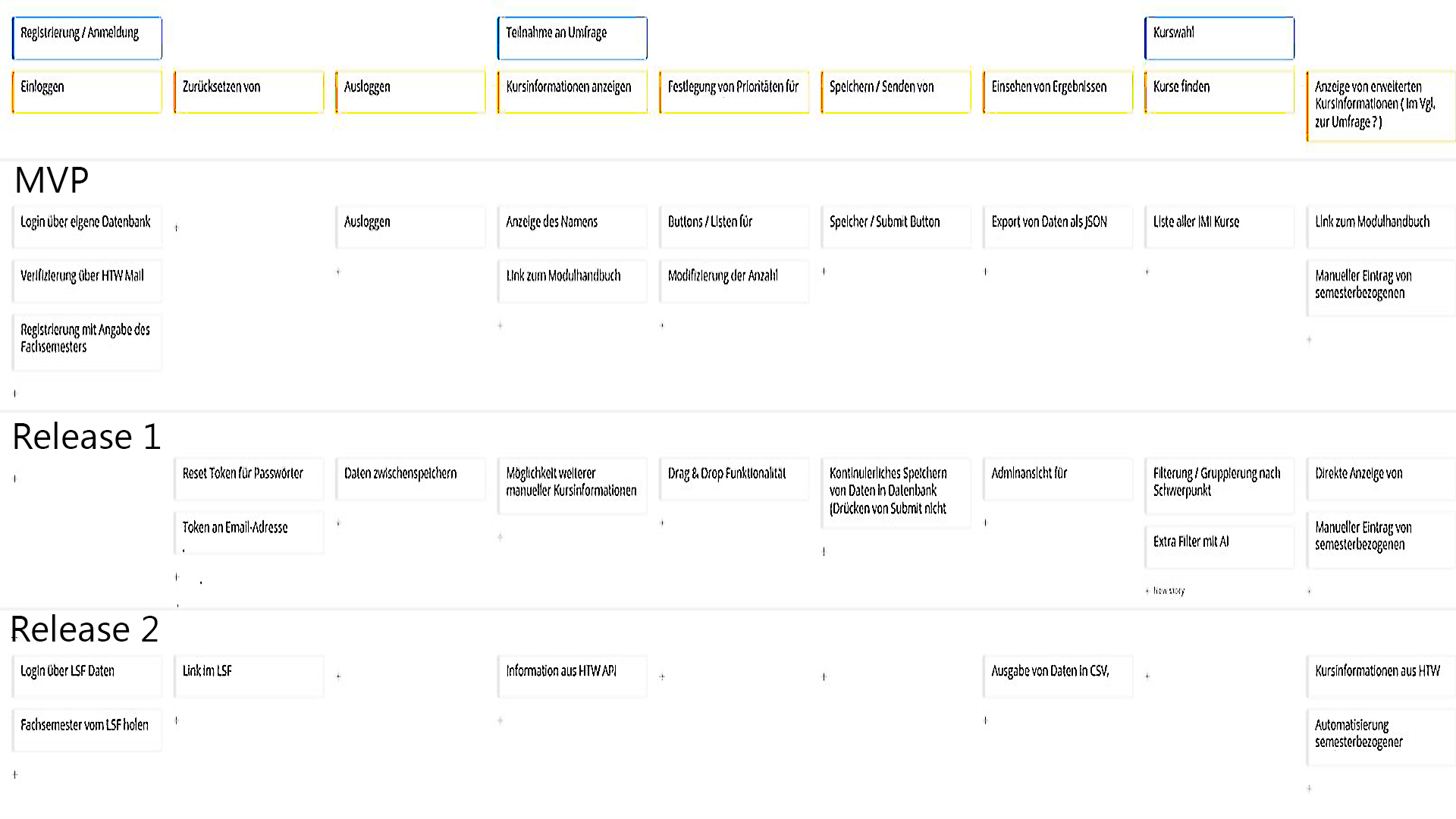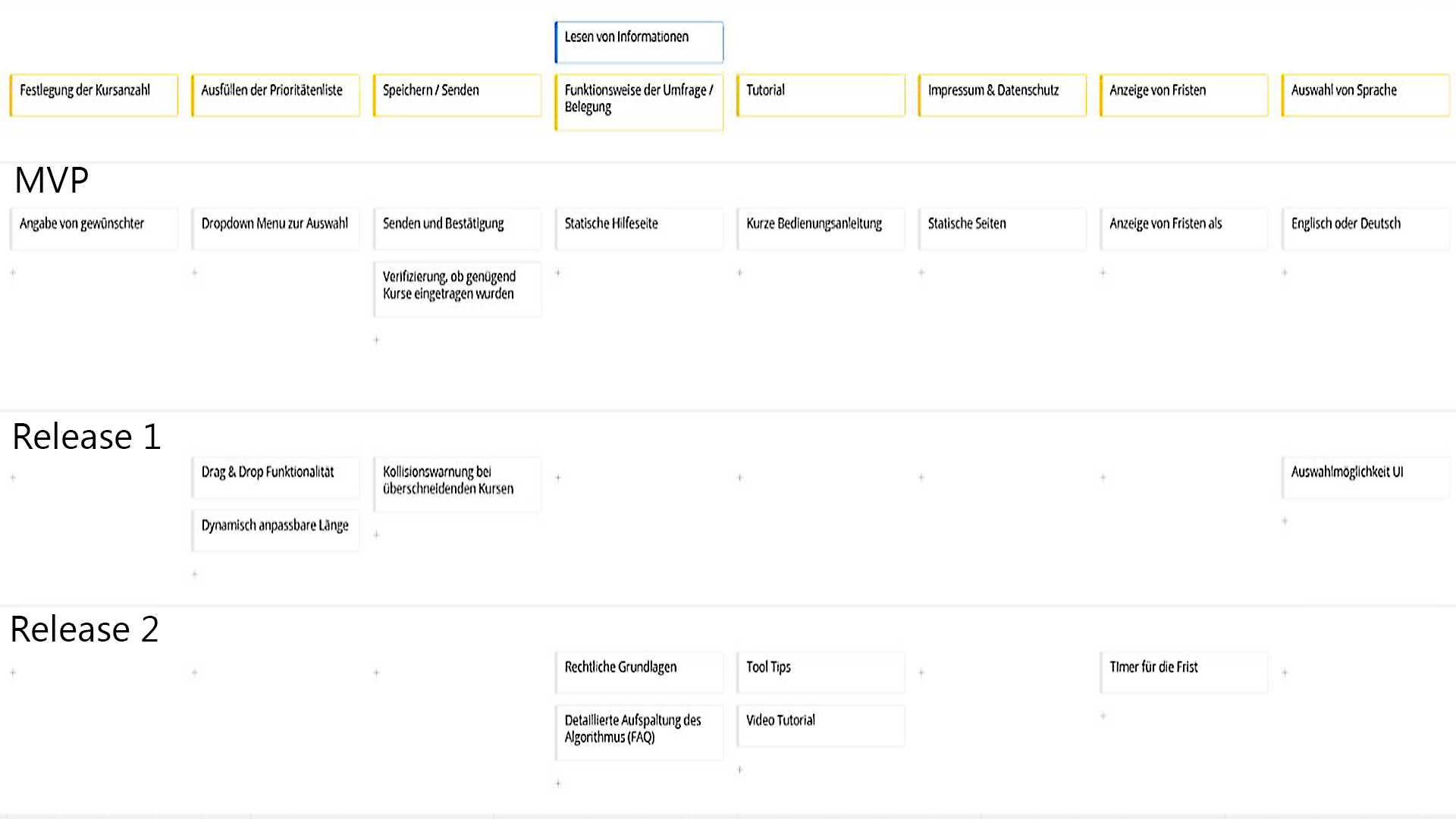Brainstorming feature ideas & prioritizing


What we had to start with
Development
Migrating and UI Design
The very first thing we had to do before actually starting to develop our project was to migrate the code base to Vue 3, so that we dont work with legacy code. During that time, we split up our team into a coding team and a UI team, because preparing a good looking user interface is also essential so that you dont start to code obliviously. The UI team showed their ideas to the project group every week and all of us gave their feedback until we were satisfied with the design. During the migration of our front-end framework, the coding team got to know how the project structure works and other minor things were already getting done like creating a docker container or playing around with the existing UI already.
Research
Another very important step before starting to implement our ideas was to do some research for the algorithm we wanted to use and also clarify which legal matters we had to pay attention to. This included to find out if there are already existing algorithms we could use or modify to fit our circumstances and also talking to the administration of the HTW to clarify how much impact we would be allowed to have on the course distribution.
Creating our App
Once the foundational stuff was done, we could start working on the code all together. For that we created issues on GitHub during our weekly meetings and assigned them accordingly to everyones skills so we could make sure that our work is getting done as planned. During the weekly sprints we had after that, we always updated each other on our progress and thoughts that we have, while also being able to ask our team members if we would have any problems.